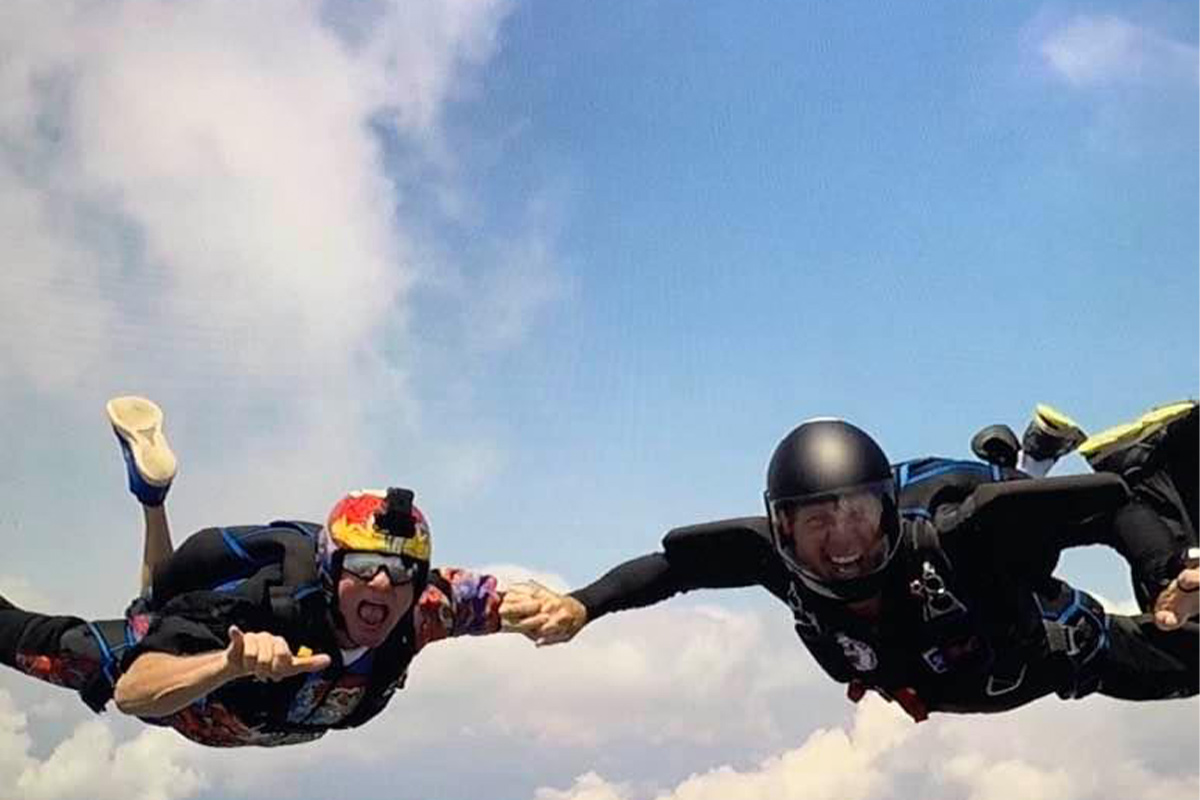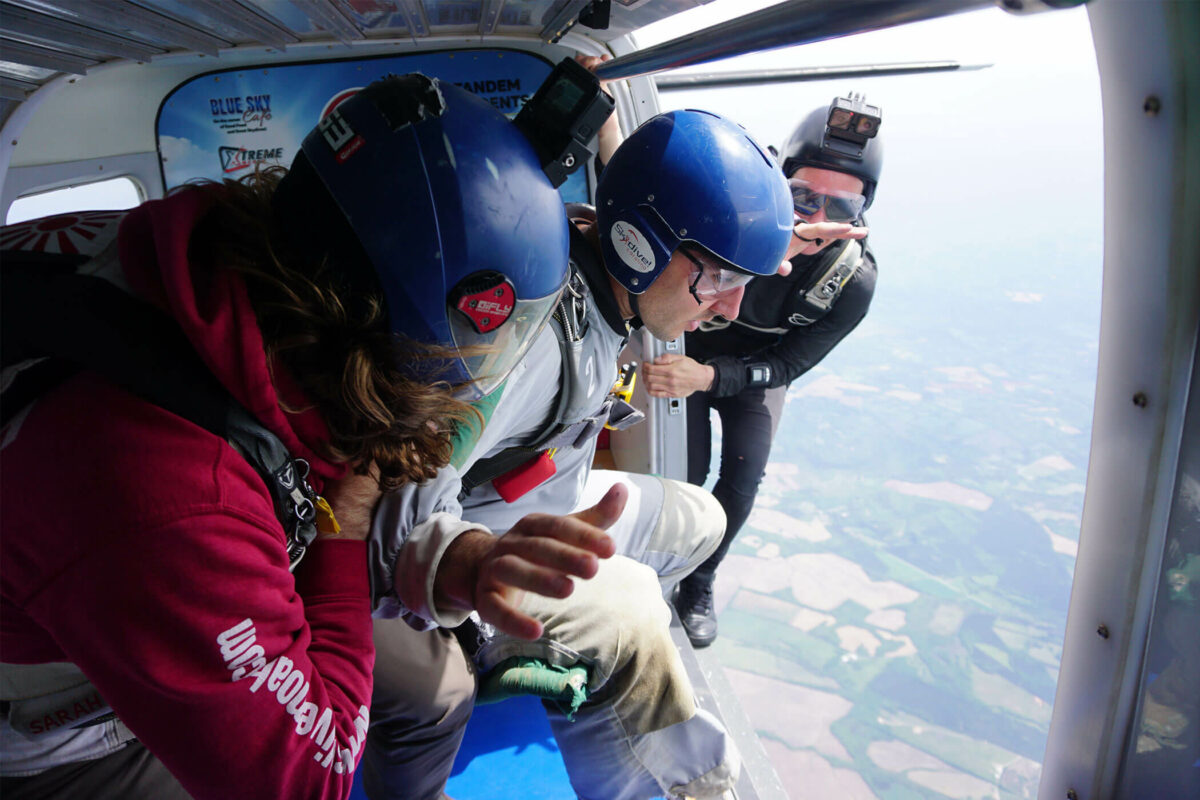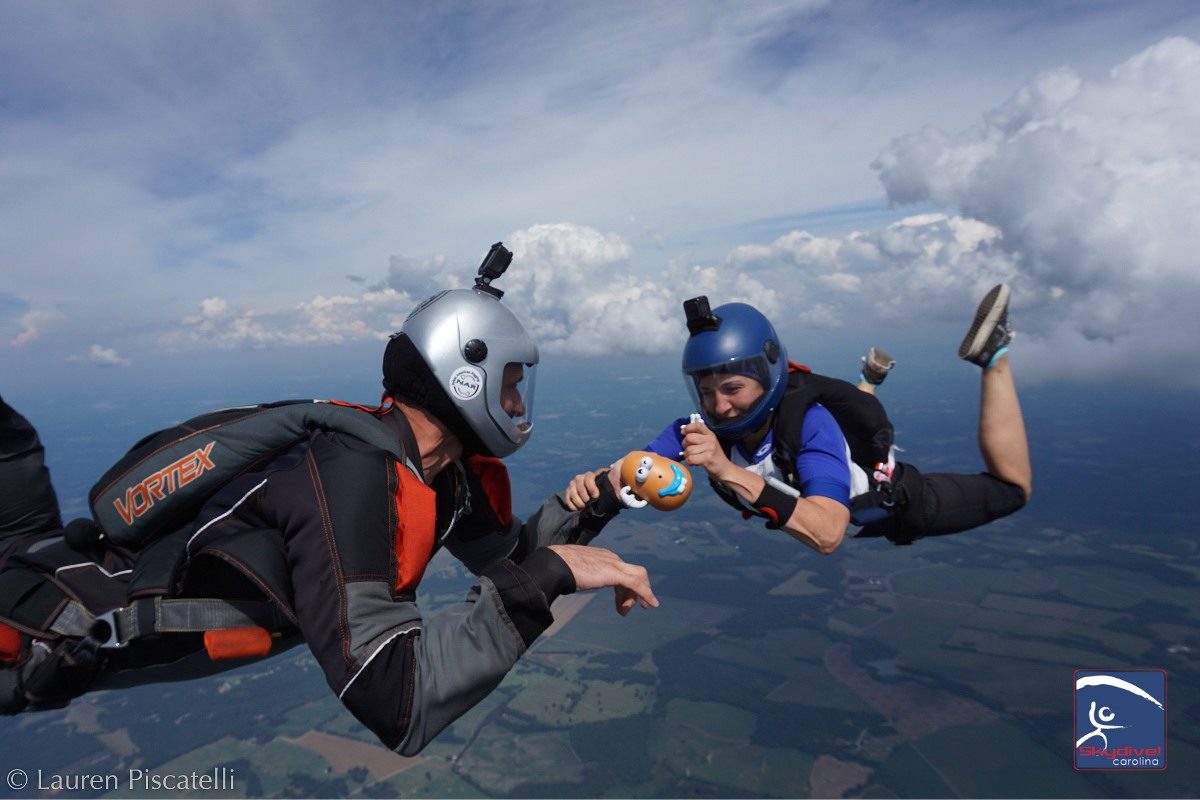Compared to Other Sports, How Dangerous is Skydiving
Friday, October 6, 2023
How Dangerous is Skydiving Compared to Other Sports
Skydiving is often perceived as a highly dangerous activity reserved for adrenaline junkies and daredevils. We get it! Willingly jumping out of an airplane mid-flight to plummet toward the ground at 120 mph doesn’t sound like the most logical thing a person could do! But risk and danger are sometimes perceived rather than real, so it’s important to really understand the dangers of skydiving. Asking questions like “how dangerous is skydiving statistically?” and “how dangerous is skydiving compared to other sports?” can give us more of an idea of what we’re getting ourselves into when skydiving for the first time.
So, how safe is skydiving as a sport? Read on to learn about the risks associated with skydiving, how to mitigate them, and how jumping out of an airplane compares to other activities.
How Dangerous is Skydiving Statistically?
Statistics are a great tool to help us understand part of a more complete picture. Thankfully, the United States Parachute Association (USPA) tracks skydiving fatality statistics on an annual basis and publicly reports the results. The good news is that their reports show that skydiving has gotten much safer since the beginning of the sport.
Comparing the data in 10-year increments, the number of annual jumps has consistently increased, and the percentage of fatalities has decreased.
| Year | Skydiving Fatalities in the U.S. | Estimated Annual Jumps | Fatalities Per 100,000 Jumps |
|---|---|---|---|
| 2022 | 20 | 3.9 million | 0.51 |
| 2012 | 19 | 3.1 million | 0.61 |
| 2002 | 33 | 2.6 million | 1.27 |
Another nuance of understanding statistics is knowing what they include. The USPA’s fatality records encompass all of skydiving, meaning that experienced jumpers are included in these numbers. And, perhaps surprisingly, it’s experienced jumpers who are most often involved in skydiving accidents. This is because experienced skydivers often fly small, aggressive parachutes and push the limits of what’s possible.
When it comes to tandem skydives, the 10-year average shows one fatality for every 500,000 tandem jumps annually.
OK, now let’s consider the question, how dangerous is skydiving compared to other activities?

Comparison with BASE Jumping
Of all of the comparisons one can make, BASE jumping is probably skydiving’s closest cousin. Both sports involve an initial jump into the open air, a parachute, and freefalling through the sky. But that’s about where the similarities end.
BASE jumping is actually much more dangerous than skydiving, and even with the similarities, is considered a completely different sport. BASE jumping consists of exiting from a fixed object (Bridge, Antenna, Span, Earth = BASE) and falling for a much shorter timeframe than you freefall on a skydive.
This shorter duration means that if there’s an emergency or malfunction, there’s not a lot you can do about it. BASE jumping rigs actually don’t even contain a reserve parachute for this reason. And then add in the close proximity to whatever it is that you jumped from, there is a much smaller margin of error for people who BASE jump compared to those who skydive.
The landing area in BASE jumping can also pose greater risk than those used for skydiving. When you land from a skydive, you are almost always landing in a designated landing area that has been cleared for safe landings. On a BASE jump, you have to land in whatever patch of open space is available to you, no matter how small or cluttered. And ‘open space’ is up for interpretation. This leaves a lot of room for injuries or accidents when BASE jumpers come in to land.
The statistics also reflect the difference in the two sports. Unlike skydiving, which has oversight from both the USPA and the Federal Aviation Administration, BASE jumping is not governed or regulated. As such, it’s hard to find accurate records of BASE jumping injuries and fatalities. The BASE fatality records show 444 deaths in the sport since 1981. Some studies put the BASE fatality rate as high as 1 fatality per 60 jumps.
No matter how you slice it, BASE jumping involves considerably more risk than skydiving.

Comparison with Bungee Jumping
Another activity that is often compared to skydiving is bungee jumping. Falling toward the ground is falling toward the ground, right? Not quite. Bungee jumping is actually different from skydiving in a lot of ways.
For starters, bungee jumping involves jumping from a relatively short distance – typically a few hundred feet; skydiving typically occurs between 10,000 and 14,000 feet. Then there’s the fact that bungee jumping involves jumping from a stationary object and skydiving involves jumping from a fast-moving plane. This means bungee jumping feels like falling whereas skydiving freefall feels like flying.
Bungee jumping is much more of a one time thrill, whereas skydiving has an entire culture that comes with education, training, skill development, numerous disciplines and competition. One similarity between the two sports, though, is the heavy emphasis on safety, regulations, and risk level. Of course, there’s no back up system with bungee jumping if the cable snaps.
Needless to say, we’re partial to skydiving.
Comparison with SCUBA Diving
The SCUBA diving comparison is the one that surprises the most people. Sure, going to the deepest depths of the ocean with nothing to breathe with but a big canister of air sounds scary, but it can’t be as dangerous as skydiving! Incorrect.
In fact, statistically speaking, SCUBA diving is more dangerous than skydiving. While SCUBA diving is also highly regulated and there are extensive training opportunities, the environmental variables make diving into the water a bit more dangerous than diving into the sky.
There are a lot of unpredictable factors under the sea, and the consequences of an incident or a mistake come with a lot fewer bail-out options. As a result, the statistics of dying while SCUBA diving are 1 in 34,400, which is a lot higher than skydiving.
We’ll stick to airplanes over boats, thank you very much!

Comparison with Race Car Driving
The dangers of race car driving might be the most obvious of any comparison. Flying around a track at over 100 mph is just asking for trouble, and the consequences of a mistake are often dire. According to one study, the odds of dying while Grand Prix racing is 1 in 100. You have to be whole-heartedly committed to your passion to take on those odds.
Comparison with Football
What about skydiving compared to a normal sport? Lots of people play football, and more than 16 million Americans watch football when it’s on TV. It must be comparatively safe, right?
Statistically speaking, skydiving does see more fatalities than football. So in that way, football takes the cake. However, football carries its own set of risks that make skydiving safer in other ways. The risk of injury and concussion is a huge part of the game of football, so much so that the NFL has had to develop policies to protect players from life altering accidents.
The injury rate of football is much higher than most other sports at 8.1 per 1,000 athlete exposures, according to the NCAA. And there have been fatalities associated with football. The NCAA found that there were 11 fatalities due to indirect catastrophic injuries over a five year period, or death caused by systemic failure as a result of exertion while participating in a football activity, or by a complication that was secondary to a nonfatal injury.
You might as well jump out of an airplane if even doing something as “normal” as playing a game of football can be that dangerous!!

Mitigating Risk
Part of the reason skydiving has become so much safer over the years is because skydivers learn from their mistakes. Decades of research and development have gone into advancing skydiving gear and training tactics. There is even a Safety & Training Advisor appointed at every single dropzone whose sole responsibility is to oversee the safety of the operation and address any incidents.
The instructors at Skydive Carolina are highly trained and USPA-certified in order to be able to do their job. An instructor’s main concern is getting you to the ground safely so you can enjoy your jump. And that attention to detail extends to all of our parachute packers, videographers, pilots, and the rest of our staff and our facilities.
Most skydivers aren’t the reckless rule breakers that pop culture makes them seem. We love skydiving and we all want to live to jump another day!
Come jump with one of our safety-minded instructors and let us show you how secure you can feel in the sky!
Copyright © 2024, Skydive Carolina, All Rights Reserved.
DropZone Web Design & Marketing by Beyond Marketing, LLC





